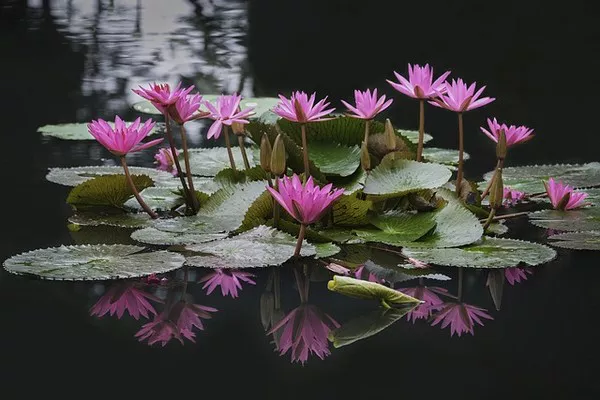In the intricate tapestry of human emotions, hope emerges as a luminous thread, weaving its way through the fabric of our existence. As we navigate the complexities of life, hope serves as a beacon, illuminating our path through the darkest of times. In the realm of symbolism, flowers have long been recognized as powerful carriers of meaning, and among their myriad representations, one of the most profound is the embodiment of hope.
Historical Significance
Throughout history, civilizations across the globe have attributed symbolic meanings to various flowers, often linking them to human emotions and aspirations. The association between flowers and hope has deep roots, transcending cultural and geographical boundaries. In ancient Greece, for example, the myth of Persephone and the pomegranate seeds intertwined with the blooming of flowers marked the cyclical renewal of life, symbolizing the eternal return of hope after periods of darkness.
The Language of Flowers
Floriography, the language of flowers, gained popularity during the Victorian era, providing individuals with a subtle and elegant means of expressing sentiments that were sometimes difficult to convey openly. During this period, flowers became laden with meanings, and specific blooms were chosen to convey emotions ranging from love and friendship to sorrow and, importantly, hope.
The Lily: A Symbol of Renewal
Among the diverse array of flowers, the lily stands out as a powerful symbol of hope. With its pristine white petals unfurling from a slender stem, the lily represents purity and renewal. In various cultures, the lily is associated with the divine and is often seen as a harbinger of positive change. Its presence in religious ceremonies and rituals further underscores its significance as a flower of hope.
The Lotus: Rising from Adversity
In Eastern cultures, particularly in Buddhism, the lotus flower holds profound symbolism. Emerging from the murky depths of ponds and rivers, the lotus rises above the muck to bloom in pristine beauty. This extraordinary journey from adversity to sublime beauty mirrors the human experience of overcoming challenges and finding hope in the midst of difficulties. The lotus serves as a visual reminder that even in the murkiest waters, the potential for transformation and hope exists.
The Sunflower: Following the Light
With its golden petals and a vibrant, sun-like appearance, the sunflower has become synonymous with optimism and hope. In the language of flowers, the sunflower is a representation of adoration and loyalty, but it also carries a deeper meaning. As the sunflower turns its face towards the sun, it symbolizes the human inclination to seek light and positivity in the face of adversity. Its resilient nature, standing tall and proud, resonates with the human spirit’s ability to find hope even in the darkest moments.
The Rose: A Tapestry of Emotions
While the rose is often associated with love, it also bears significance in the realm of hope. The unfolding layers of a rose, from bud to full bloom, mirror the complexity of human emotions. In times of uncertainty, the rose represents the unfolding of possibilities and the potential for positive outcomes. Its thorns, a reminder of life’s challenges, only accentuate the beauty of the bloom, highlighting the resilience required to find hope amidst adversity.
Cultural Perspectives on Hope and Flowers
The association between hope and flowers is not limited to a specific culture or time period. Across the world, diverse societies have integrated flowers into their symbolism of hope. In Chinese culture, for instance, the peach blossom is revered for its ability to bring about positive transformations and symbolizes the hope for a prosperous future. Similarly, in Native American traditions, the delicate and resilient yarrow flower is seen as a symbol of courage and hope.
Healing Powers of Flowers
Beyond their symbolic meanings, flowers have also been recognized for their healing properties, both physical and emotional. The field of horticultural therapy acknowledges the therapeutic benefits of engaging with plants and flowers. The act of tending to a garden or simply appreciating the beauty of blooming flowers has been shown to alleviate stress, anxiety, and depression. In this context, flowers become tangible manifestations of hope, providing individuals with a source of solace and inspiration.
Conclusion
In the delicate language of flowers, hope is an ever-present motif, interwoven with the petals and stems that compose nature’s vibrant tapestry. From the ancient myths of gods and goddesses to the Victorian intricacies of floriography, flowers have consistently emerged as powerful symbols of hope. The lily, lotus, sunflower, rose, and countless other blooms carry with them the essence of renewal, resilience, and the enduring capacity of the human spirit to find hope in the face of adversity. As we continue to navigate the complexities of life, let us draw inspiration from the flowers that grace our world, understanding that, like these blooms, hope can blossom even in the most challenging of circumstances.


